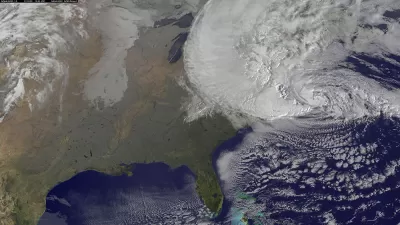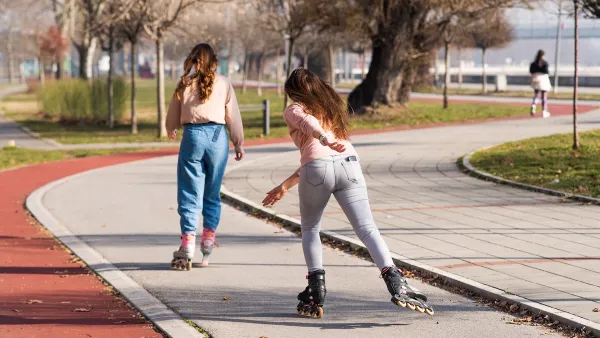In spite of my sense that we are heading pell mell into the gloom of global warming, catastrophic conflict and hopeless mediocrity, I’ve noticed a hopeful trend. Beauty and happiness have been rehabilitated from irrelevant to necessary. It may not be an avalanche, but proponents are showing up in unusual places: a book by an environmental conservationist, another by an historian philosopher, and a Mother Jones article about the economy. Can this portend a trend?
In spite of my sense that we are heading pell mell into the gloom of global warming, catastrophic conflict and hopeless mediocrity, I've noticed a hopeful trend. Beauty and happiness have been rehabilitated from irrelevant to necessary. It may not be an avalanche, but proponents are showing up in unusual places: a book by an environmental conservationist, another by an historian philosopher, and a Mother Jones article about the economy. Can this portend a trend?
For those of us who know the science that proves that the quality of the environment has a profound effect on humans, it makes me giddy to see this reality showing up in unfamiliar arenas. True, Mother Jones magazine (April 2007) is not Business Week or the WSJ, but Bill McKibben makes the case that "growth no longer makes us happier." Happier? Since when did anyone publicly care about that? Quality of life perhaps, but not happiness. Happiness is elusive and personal, not a topic of public pursuit. And it gets better. Professor of Environmental Studies David Orr, in his book The Nature of Design, argues that we need to cultivate beauty to ensure human tenure on this earth. This can't be coming from the ever-serious environmental movement. How can we resist the pursuit of beauty if it is now linked to our very survival? My final champion is the eclectic writer Alan de Botton in his new book, The Architecture of Happiness. Happiness again? He makes the audacious connection between beauty and well being, commits to the notion that we are "inconveniently vulnerable" to our surroundings and to the power of design to satisfy needs we may not even know that we have. These are radical ideas in a society intent on endless, and mostly banal, consumption.
The subject I will most often write about in this space is Universal Design, a world wide movement that promotes the expectation that environments, objects and communication systems will be beautifully usable - they will work beautifully and they will look beautiful. Also known as Inclusive Design, Design for All, or Lifespan Design, this concept is well known in Europe and Japan where the market and designers have well exploited the "Wow!" factor that their aging populations expect. With the imminent aging of baby boomers, the U.S. is likely to benefit from the "early adopters" overseas. An outbreak of beauty and happiness might be just what we need.

Planetizen Federal Action Tracker
A weekly monitor of how Trump’s orders and actions are impacting planners and planning in America.

Map: Where Senate Republicans Want to Sell Your Public Lands
For public land advocates, the Senate Republicans’ proposal to sell millions of acres of public land in the West is “the biggest fight of their careers.”

Restaurant Patios Were a Pandemic Win — Why Were They so Hard to Keep?
Social distancing requirements and changes in travel patterns prompted cities to pilot new uses for street and sidewalk space. Then it got complicated.

Platform Pilsner: Vancouver Transit Agency Releases... a Beer?
TransLink will receive a portion of every sale of the four-pack.

Toronto Weighs Cheaper Transit, Parking Hikes for Major Events
Special event rates would take effect during large festivals, sports games and concerts to ‘discourage driving, manage congestion and free up space for transit.”

Berlin to Consider Car-Free Zone Larger Than Manhattan
The area bound by the 22-mile Ringbahn would still allow 12 uses of a private automobile per year per person, and several other exemptions.
Urban Design for Planners 1: Software Tools
This six-course series explores essential urban design concepts using open source software and equips planners with the tools they need to participate fully in the urban design process.
Planning for Universal Design
Learn the tools for implementing Universal Design in planning regulations.
Heyer Gruel & Associates PA
JM Goldson LLC
Custer County Colorado
City of Camden Redevelopment Agency
City of Astoria
Transportation Research & Education Center (TREC) at Portland State University
Camden Redevelopment Agency
City of Claremont
Municipality of Princeton (NJ)






























